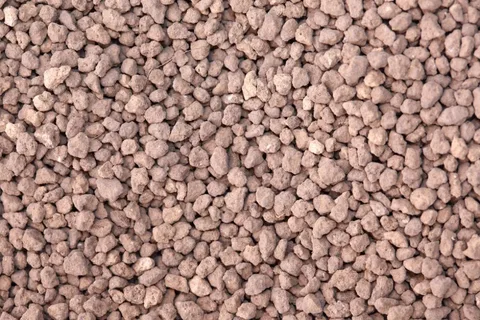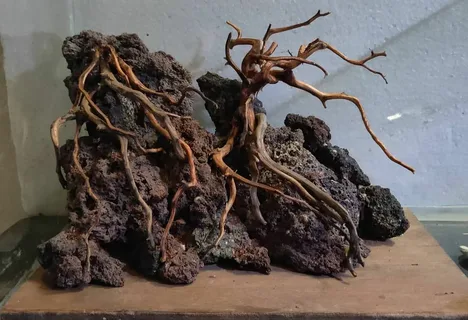Outline:
- Presentation: What is Volcanic rock for Plants?
- Why Lava Rock is Great for Plants
- Benefits of Using Lava Rock for Plants
- Drainage
- Aeration
- Root Health
- How to Use Lava Rock for Plants
- Potting Mix
- Mulch Layer
- Hydroponics
- Types of Plants That Benefit from Lava Rock
- Step by step instructions to Really focus on Plants with Pumice
- Normal Missteps to Keep away from
- FAQs about Igneous rock for Plants
- What is Lava Rock Made of?
- Can I Use Lava Rock for All Plants?
- How Often Should I Replace Lava Rock in My Pots?
- Is Lava Rock Expensive?
- Conclusion: Why You Should Consider Lava Rock for Your Plants
If you are searching out a natural, long-lasting manner to enhance your flowers’ increase, lava rock for flowers would possibly virtually be the answer.
Not only does lava rock enhance your soil, however it additionally promotes better drainage, root health, and aeration, which can be crucial for robust and wholesome plant growth.
In this manual, we’ll discover the whole thing you want to know about lava rock, from its advantages to the way to apply it efficiently on your garden or indoor pots.
What is Lava Rock for Plants?
Pumice is a kind of permeable volcanic stone that is made while liquid magma cools and cements.
It’s distinguished for its light-weight nature and rough surface, making it an extraordinary expansion to cultivating and finishing.
Lava rock comes in diverse sizes, from small gravel-sized quantities to larger chunks, and can be decided in many shades, at the side of pink, black, or even greenish tones, relying on its beginning.
Because it’s obviously wealthy in minerals and has a porous shape, lava rock is relatively valued in horticulture.
It provides extraordinary drainage and aeration, assisting vegetation thrive by preserving their roots healthy and well-oxygenated.
Why Lava Rock is Great for Plants
Benefits of Lava Rock for Plants

Lava rock gives numerous tremendous advantages that make it a move-to fabric for seasoned gardeners and plant fans.
Let’s destroy down the principle blessings:
1. Drainage
One of the primary reasons people use lava rock in their gardening is for superior drainage.
When introduced to your potting combination, lava rock lets water float freely via the soil, preventing root rot due to excess moisture.
The porous nature of lava rock creates a tiny wallet of air within the soil, taking into consideration better water retention while additionally making sure that any excess water escapes short.
Plants that don’t like sitting in soggy soil, like succulents, cacti, and different drought-tolerant species, benefit significantly from lava rock’s functionality to enhance drainage.
2. Aeration
Lava rock helps to decorate aeration in the soil, this is essential for wholesome root development.
When roots have got right of access to enough oxygen, they develop stronger and greater strength, allowing the plant to absorb vitamins extra efficiently.
This is in particular beneficial for vegetation like orchids or bonsais, which want properly-aerated soil to thrive.
3. Root Health
By improving every drainage and aeration, lava rock promotes higher root health.
Healthy roots are key to a plant’s normal health, and lava rock lets in ensure that roots aren’t waterlogged or disadvantaged of oxygen.
For flora with touchy roots or the ones prone to root rot, lava rock is a superb addition to your developing medium.
How to Use Lava Rock for Plants
There are several methods to incorporate lava rock into your gardening routine.
Here are the most common makes use of for lava rock with flowers:
1. Potting Mix
Lava rock can be delivered to your potting mix to enhance drainage and aeration.
Simply mix it with your normal soil or compost to create a properly-balanced growing medium.
For flowers like succulents, cacti, and orchids, an aggregate of approximately 30-50% lava rock with soil works high-quality.
The rock allows keep the soil from becoming too dense and compacted, making sure your plant roots can breathe and develop freely.
2. Mulch Layer
Lava rock is also fantastic as a mulch layer on top of the soil for your pots or lawn beds.
The rock lets in preserve moisture with the resource of stopping evaporation on the same time as also retaining the soil temperature strong.
The chunky texture of lava rock additionally discourages weeds from growing, making it a double win in your garden.
For outside vegetation, lava rock mulch can help preserve moisture all through the heat climate and reduce the need for frequent watering.
It moreover provides an appealing contact to your lawn, with its striking purple, black, or brown colorings.
three. Hydroponics
If you’re into hydroponic gardening, lava rock is a remarkable medium for hydroponic structures.
It can be used as an inert developing medium in systems like drip irrigation or deep water life-style.
Lava rock’s porous form guarantees that your hydroponic flora have access to oxygen and vitamins, at the same time as its weight ensures balance.
It’s a high-quality opportunity for folks who need to strive to grow vegetation in water, as lava rock receives it to rot or degrade in water like a few herbal substances would possibly.
Types of Plants That Benefit from Lava Rock
Lava rock isn’t only for any plant—it’s mainly appropriate to sure sorts of vegetation that need well-tired soil.
Here’s a list of flora that advantage from lava rock:
- Succulents: Plants like aloe vera, jade, and echeveria flourish in very much drained soil and love the more noteworthy air circulation basalt presents.
- Prickly plants: Like succulents, desert flora are utilized to dry, rough soil and need exact waste to keep away from root decay.
- Orchids: These tropical beauties need a free, nicely-aerated growing medium, and lava rock lets in hold their roots gladly.
- Bonsai Trees: Bonsai roots require quite a few oxygen and thrive even as planted in a nicely-draining, aerated medium.
- Tropical Plants: Many tropical plants choose a balance of moisture and drainage, and lava rock can help create the proper surroundings.
The most effective method to Really focus on Plants with Pumice
Once you’ve brought lava rock in your pots or garden beds, it’s essential to care for your vegetation properly.
Here are some guidelines to make certain that your flowers live healthful and hold to enjoy the use of lava rock:
Watering
Plants grown in soil with lava rock don’t require as frequent watering as the ones in regular soil.
The stone allows it to hold dampness, but it additionally guarantees that additional water can deplete away, halting waterlogged soil.
Make sure to check the dirt dampness sooner than watering, and avoid overwatering.
Fertilization
While pumice itself doesn’t add supplements to the dirt, it might help your greenery take in the nutrients in your compost.
Make tremendous effort to fertilize your plants often, mainly in case you’re growing them in a mixture that incorporates lava rock.
Follow the pointers on your unique plant type, and bear in mind no longer to over-fertilize, as this will bring about nutrient burn.
Repotting
Since lava rock doesn’t smash down or degrade over the years, it could be reused when you repot your flora.
Notwithstanding, it’s continually an extraordinary idea to smooth the igneous rock completely to get rid of additional minerals or particles ahead of time rather than reusing it.
Normal Errors to Stay away from
While basalt is a fantastic expansion for your cultivation ongoing, there are a couple of typical missteps that individuals utilize.
The following are a couple of issues to remember:
1. Overwatering
Lava rock improves drainage, however it may save you from overwatering completely.
Always make certain your plants aren’t sitting in water, as this could motivate root rot.
2. Not Mixing Properly
Lava rock needs to be mixed with other substances like soil, compost, or perlite to create a balanced developing medium.
Using lava rock on its personnel for maximum plants can result in horrible nutrient retention.
3. Using Lava Rock for the Wrong Plants
Lava rock is wonderful for flowers that want exceptional drainage, however a few flora determine upon extra moisture.
Don’t use lava rock for vegetation that wants continuously wet soil, like ferns or peace lilies.
FAQs about Igneous rock for Plants
What does Igneous rock Consist of?

Igneous rock is made from cooled and cemented magma from volcanic emissions.
It’s affluent in minerals like iron, magnesium, and calcium, which could advantage vegetation simultaneously as utilized accurately.
Can I Use Lava Rock for All Plants?
Lava rock works high-quality for flora that want well-worn-out soil, like succulents, cacti, and orchids.
For plant life that depends on greater moisture, lava rock may not be the first-class choice.
How Often Should I Replace Lava Rock in My Pots?
Lava rock doesn’t spoil down or degrade like herbal rely, so it may last for years.
You can also want to update it if it gets compacted or clogged, however this isn’t some aspect you want to do often.
Is Lava Rock Expensive?
Lava rock is typically low cost and may be determined at most lawn centres.
The rate can vary depending on the size, coloration, and location, however it’s commonly a less expensive preference for enhancing soil first-rate.
Conclusion: Why You Should Consider Lava Rock for Your Plants
Incorporating lava rock for vegetation into your gardening routine is a smart manner to enhance plant health and create a notable surroundings for your greenery.
From better drainage and aeration to progressed root health, lava rock offers quite a number of advantages that can take your plant life to the following diploma.
Whether you’re developing succulents, orchids, or perhaps bonsai, lava rock is a versatile and lengthy-lasting addition to your plant care.
So in case you’re seeking to enhance your garden or indoor plant setup, supply lava rock. Your flora will thank you for it!
